Looking for travel tips to Venice to better prepare for your trip?
You’ve come to the right place!
This article covers all the essential information you need to know before visiting Venice, especially if you are traveling with us.
Be prepared for your trip with our Venice travel tips and our packing list here, and get ready for a fabulous trip!
Below is a little history lesson on Italy and Venice to better understand everything that has made the country what it is today. To skip right to our travel tips, click here!
Brief history of Italy
The history of modern Italy starts with the Roman Republic, founded in Rome in the 8th century BC and evolving into an empire in the 6th century BC. It was this empire which dominated most of Italy as well as southern Europe and North Africa for well over a millennia.
The Roman Empire thrived and expanded across the Mediterranean until the 5th century AD, with the Fall of the Western Roman Empire in 476, when it disintegrated into several separate states.
Some of these such as the Venetian and Genovese States, continued to rise through trade, shipping and commerce, while other parts of Italy, especially the south, fell under the influence of other crowns.
Even during the 16th century Renaissance period, which originated in Florence and spread across Europe, Italy was still fragmented and made up of several states and republics.
During the 18th century, what we today know as Italy was heavily divided and subject to the results of the many wars of succession in Europe, with the northern territories belonging to the Austrian Empire and the southern part unified into the Spanish Crown.
Wars were so common that the various regions of Italy changed hands multiple times.
It was when Napoleon conquered most of the country during the French Revolution that the country was first called the Kingdom of Italy and mostly unified.
But it was not until later on, in 1861, after the war of independence led by national hero Garibaldi, that the whole of Italy was finally unified under one country.
Notwithstanding, the country did not become what we know it today to be until WWII when fascist Mussolini, a WWI veteran, rose to power and joined Nazi Germany.
At the end of the war, the civil war that ensued, and the death of Mussolini, Italy reinstated democracy and developed financially to become one of the founding members of the European Union and NATO.
Brief history of Venice
As you can see, Italy was a much fragmented country until the 19th century and so Venice has its own different history which I wanted to briefly explain here because it is important when understanding the city, its heritage and wealth and its relevance.
Venice, located in northeastern Italy, has a long and fascinating history that dates back over 1,500 years. According to legend, the city was founded in the 5th century AD when refugees from the Roman Empire fled to the lagoon in order to escape the invading barbarian hordes. The early settlers built their homes on the islands in the lagoon, which provided a natural defense against the invading forces.
Over time, Venice grew into a powerful city-state, thanks in large part to its strategic location at the crossroads of East and West. The city became an important center of trade, particularly with the Byzantine Empire and the Islamic world. Merchants from Venice traveled far and wide, establishing trade links with other cities and countries throughout Europe, the Middle East, and Asia.
In the 13th century, Venice became a republic, with an elected leader known as the Doge. The city’s leaders were known for their cunning and diplomacy, as well as their willingness to use military force when necessary. Venice maintained a powerful navy, which helped to protect the city’s interests and expand its influence throughout the Mediterranean.
During the Renaissance, Venice became a center of art and culture, with many famous artists, writers, and musicians making the city their home. The city’s architecture also flourished during this period, with beautiful Gothic and Renaissance-style buildings springing up throughout the city.
Unfortunately, the city was hit by a series of plagues and other disasters, including a devastating fire that destroyed much of it in 1577.
Venice’s fortunes began to decline in the 17th and 18th centuries. The discovery of new trade routes and the rise of other European powers weakened Venice’s monopoly on trade, and the city’s economy began to suffer.
Quick facts about Italy and Venice
Italy is one of the most beloved countries in Europe. The birthplace of Renaissance, home of great food and incredibly diverse and beautiful landscapes.
Familiarize yourself with the country and with Venice to better prepare for your trip.
Fun and interesting facts about Italy
To understand Tuscany, one must first have an insight into Italy through some of its fun and interesting facts.
- In Italy, like in Spain, many businesses will close at lunch time for a break. They usually close the store, go home, cook lunch and maybe sneak in a quick nap. That means that shopping, especially in smaller towns, needs to wait until shops reopen again at 4pm. It is also common for shops to be closed on Sundays.
- Did you know there are two countries completely landlocked by Italy? That’s right, The Vatican, which you probably knew about, and San Marino on the eastern coast.
- Italy has the most UNESCO world heritage sites in the world closely followed by Spain and China. Entire towns such as Siena or Pienza are listed, as are landscapes and other historic sites. The Colosseum in Rome is also listed and is the largest amphitheater ever built, with a capacity of 50,000 to 80,000 spectators.
- Shakespeare loved Italy and in fact 13 of his plays are set there, although we can’t be sure he ever went.
- Italy is home to many active volcanoes, most notably Mount Etna and Stromboli, both of which are pretty active, and Mount Vesuvius which famously preserved Pompeii under layers of lava and ash.
- In normal times, Italy receives more than 60 million visitors a year making it the 5th most visited country in the world.
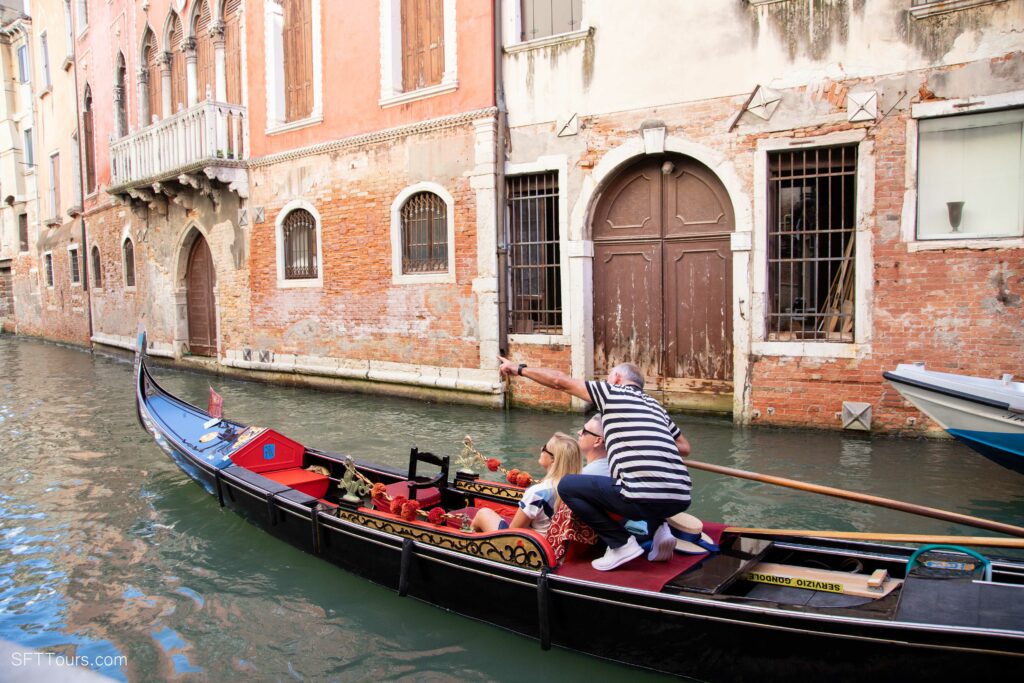
- Italians are born investors and we can thank them for having come up with corrective eye glasses, the first bank, ice cream cones, the jacuzzi, batteries and thermometers.
- Italy is one of the top-10 largest economies in the world. Member of the G7, G20 and founding member of NATO and the European Union.
- More than half of Italian men live with their mothers and this has been considered by the Church as one of the biggest risks to marriage in Italy, perhaps also the reason why the country has the lowest birthrate in Europe.
- Italians don’t fear number 13 but number 17 which in Roman numerals is XVII and can be rearranged to spell I have lived, or death.
- Did you know that the regular Italian alphabet does not contain letters J, K, W, X or Y?
- There are more than 140 kinds of pasta and each shape is not just chosen for fun but because it best matches the sauce or condiment. Therefore, don’t change the type of pasta when ordering something off the menu, there is a reason why the two are paired together.
- Pasta is a very old dish eaten since the 14th century at least.
Fun and interesting facts about Venice
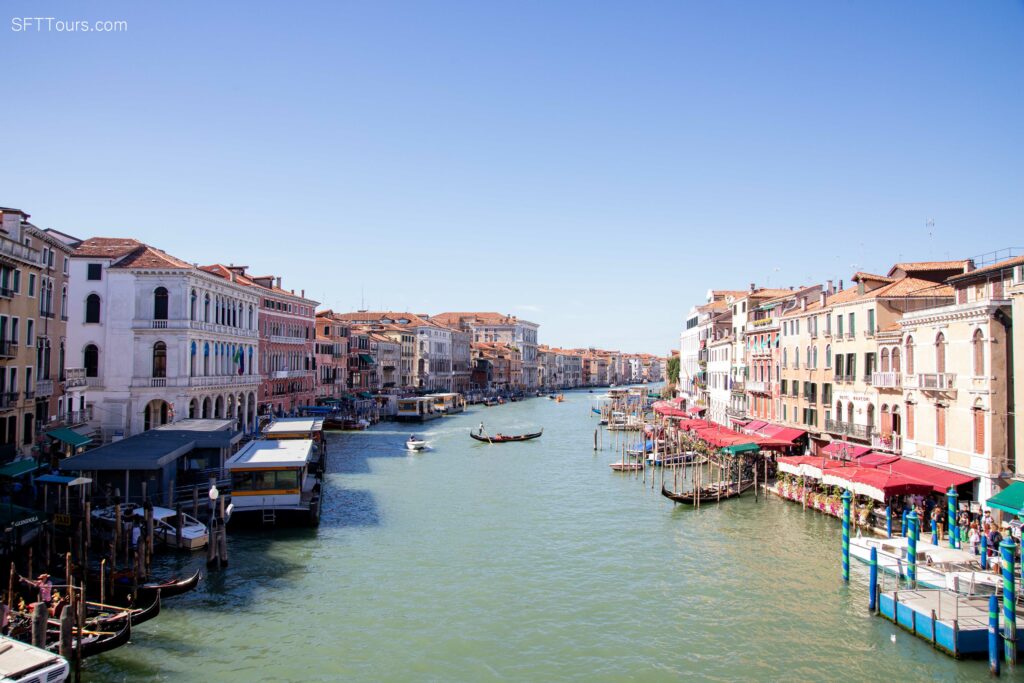
Venice is a place that evokes dreams and stories and there are many fun and interesting facts that make it a truly special place
- Venice has received many nicknames through the years. From the “Floating city” to the “Eternal city”, the “City of Canals”, or the “Lagoon city”. In medieval times, it was also known as “La Serenissima”.
- Venice is one of the oldest cities in Italy that have been preserved until today and was first founded in the 5th century AD. That means that is now around 1,600 years old.
- For 1,000 years, the Venetian Empire was an independent power dominating trade routes in the Mediterranean and conquering parts of the area such as Croatia, Cyprus or part of Montenegro. At its peak, in the 14th century, the splendour of the city could be seen in its wealth and the beautiful palazzo that still stand today.
- Venice is the birthplace of the famous Italian explorer Marco Polo, who traveled extensively throughout Asia during the 13th century. His adventures were chronicled in the book “The Travels of Marco Polo,” which helped to introduce Europeans to the wonders of the East.
- Perhaps the most shocking of all the Venice facts, is that the city we know and walk on was built on wood and remains standing on that same wood hardened by the sea salt and the fact that the water around the area is low in oxygen and thus has little life.
However, due to its precarious position, global warming and over-tourism have been pushing to city to tragedy through recurrent flooding events. In 2020 the much awaited system of barriers that would protect it from the High water phenomenon came in effect successfully holding the water from flooding the city.
- The city of canals is made of 150 of them and 400 bridges that cross and connect two sides of the water, but only four cross the Grand Canal. How many can you count on your visit?
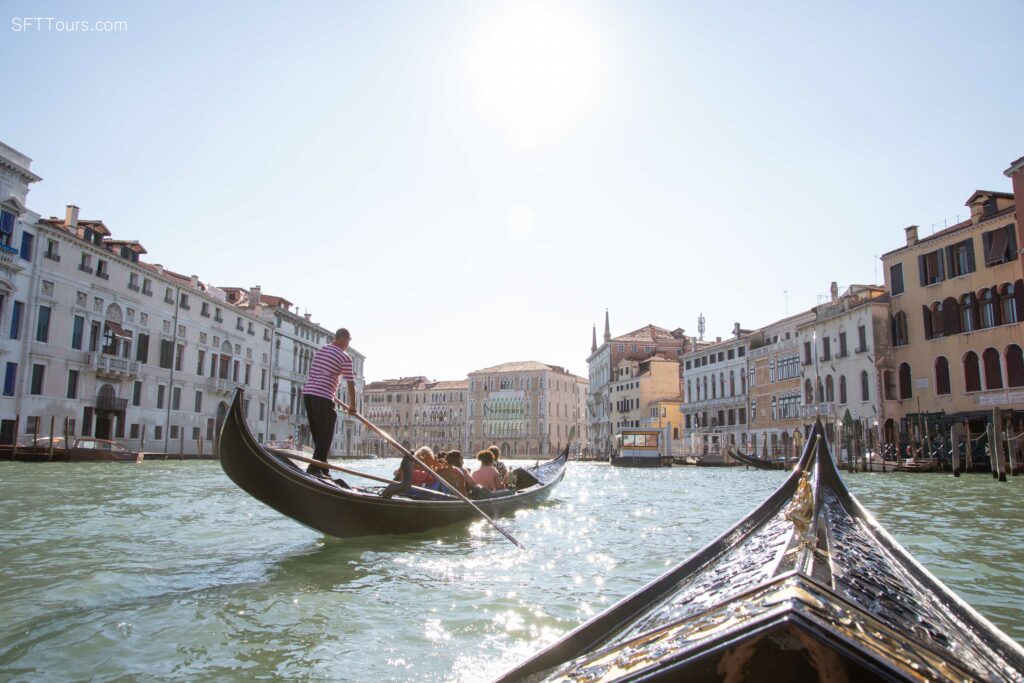
- And talking about gondolas, the tradition has always been that the license and know-how is transferred from father to sons. Because of this, there weren’t any female gondoliers until 2010 when one woman, Giorgia Boscolo, changed that. Since then, a few more female gondoliers have joined the ranks, but there is still estimated to be less than ten in practice.
There are also two sisters who are changing the unwritten rules that gondola-making is a male business. They inherited the business from their father and are determined to change that.
- The first ghetto in the world was established in Venice in 1516, and the term “ghetto” is derived from the Italian word for foundry, as the area where the Jews were required to live was located near a foundry.
- Venice is home to one of the world’s oldest public casinos, the Casino di Venezia. The casino, which opened in 1638, is housed in a beautiful Baroque-style building and offers a range of games including roulette, blackjack, and baccarat.
- Motor transport is not allowed inside the city so there are no cars, motorbikes or Vespas. Water taxis only work to and from the major points outside the city and the Grand Canal. That means a lot of walking and a few gondolas to make the journeys inside the Venice canals.
But despite being the only option, and being one of the top-tourist things to do, gondoliers are disappearing because of the hardship of getting a licence that requires a lot of training and knowledge of the area, this is why they make such great tourist guides!
- Venice is slowly but surely falling under the hands of tourism for good and bad, and locals have been leaving the city every year. Some studies predict that all could have left by 2030. Meanwhile, about 30 million people visit every year, many on day trips arriving by cruiseship.
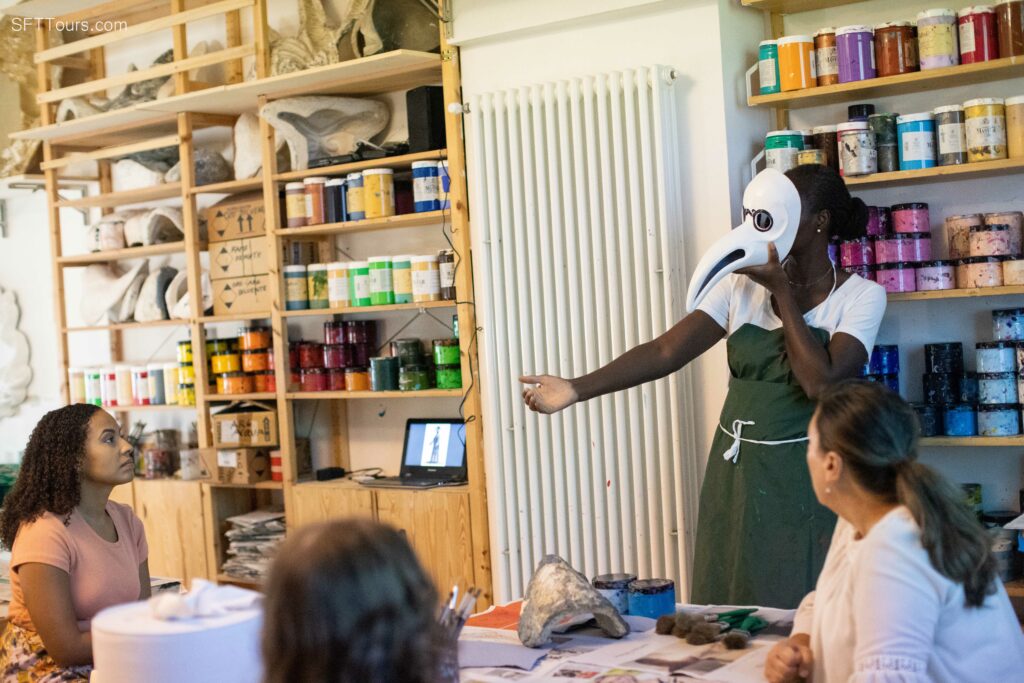
- Did you know that masks were used to hide illicit or inappropriate behavior in public? That’s right, the beautiful masks now worn during Venice’s most famous event, the Carnival, were made illegal at various points during the city’s history because people wore them to hide their identity when they were doing something wrong.
The use of masks in Venice dates back to the 13th century, when they were used by the aristocracy to hide their identity during political or social events. Over time, masks became more elaborate and were used in theater performances and masquerade balls.
They were also to be worn when women were married and attended theater or by doctors during the Plague, to protect themselves.
Venetian masks come in many different styles, from the classic white Bauta mask to the colorful and ornate Volto mask. The Bauta mask covers the entire face and has a prominent nose and chin, while the Volto mask covers only the upper part of the face and is often decorated with feathers, glitter, and other embellishments.
Today, Venetian masks are sold in many shops throughout Venice and are popular souvenirs for tourists. They are also used in theater productions, costume parties, and other events where people want to add a touch of Venetian elegance and mystery to their attire. Needless to say, they are far nicer than the ones we wore during COVID.
Venice travel tips
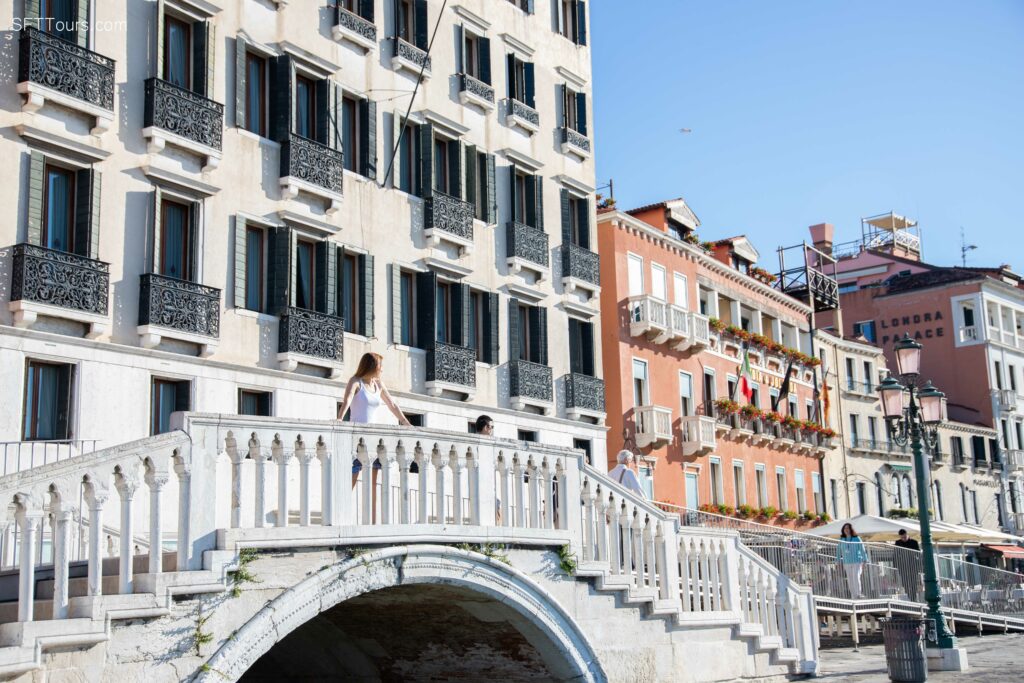
In this section we want to share general Venice travel tips to help you plan your trip.
When to visit
Venice is absolutely flooded with tourists in summer, pretty crowded in spring and autumn and it is cold and rainy in winter, therefore, choosing when to visit is critical.
In July and August, temperatures are high and the streets are crowded as Europeans, Italians and tourists from all over the world visit the city. We like to visit in June and September because the temperatures are more bearable, chances of rain are low and the tourist numbers are better than in the summer.
The shoulder season of April-May and October-November is risky because of rain and what it is does to a city that stands on water, but tourism numbers should be much lower and prices better, so if you have the time to spend a bit longer there to account for possible downpours, you are likely to enjoy the city better.
Passport and visa requirements for Italy
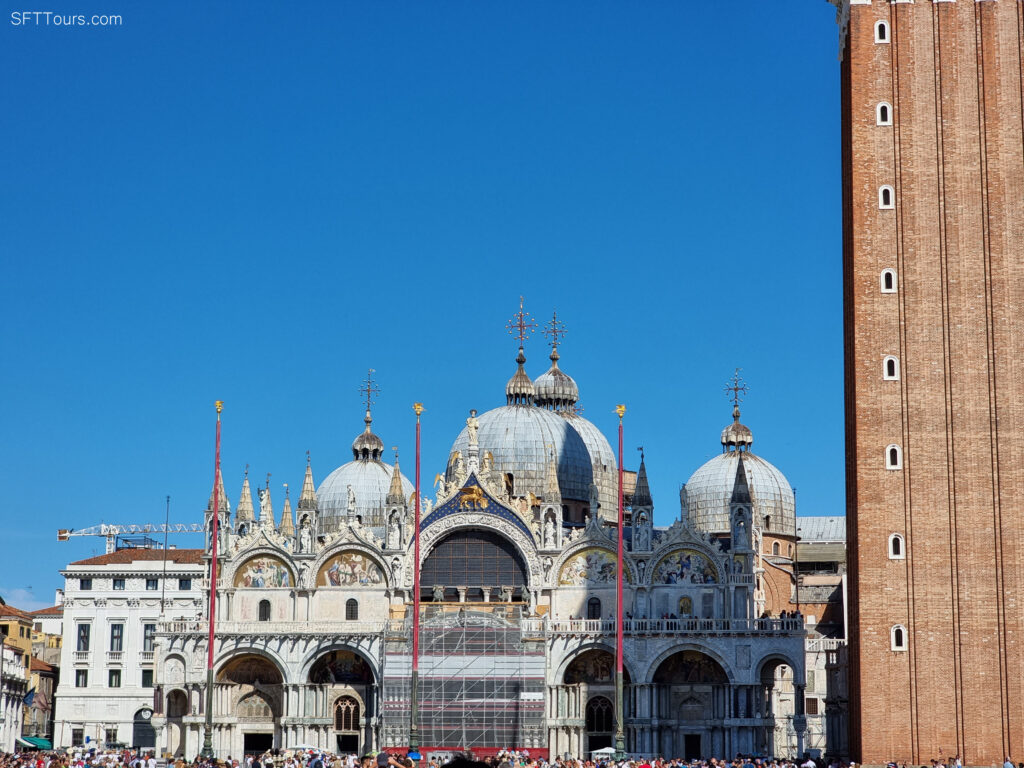
Get your passport and travel documents in check before your trip to avoid any delays at the border.
- Visa. Italy is part of the Schengen zone so you should check if you need a visa in advance with the official resource here.
A Schengen visa will allow you to travel for 90 days within a 180 day period in the Schengen zone but typically, your visa application needs to be for the first country you will be landing at.
While the general process is similar for all countries within the zone, the requirements do change and can take weeks to process so allow enough time for this. If you are unsure about the visa application process you can use a service such as iVisa to do it for you.
- Validity. We strongly recommend that you make sure your passport is valid for at least 6 months after departure and has 2 empty pages.
Health and safety
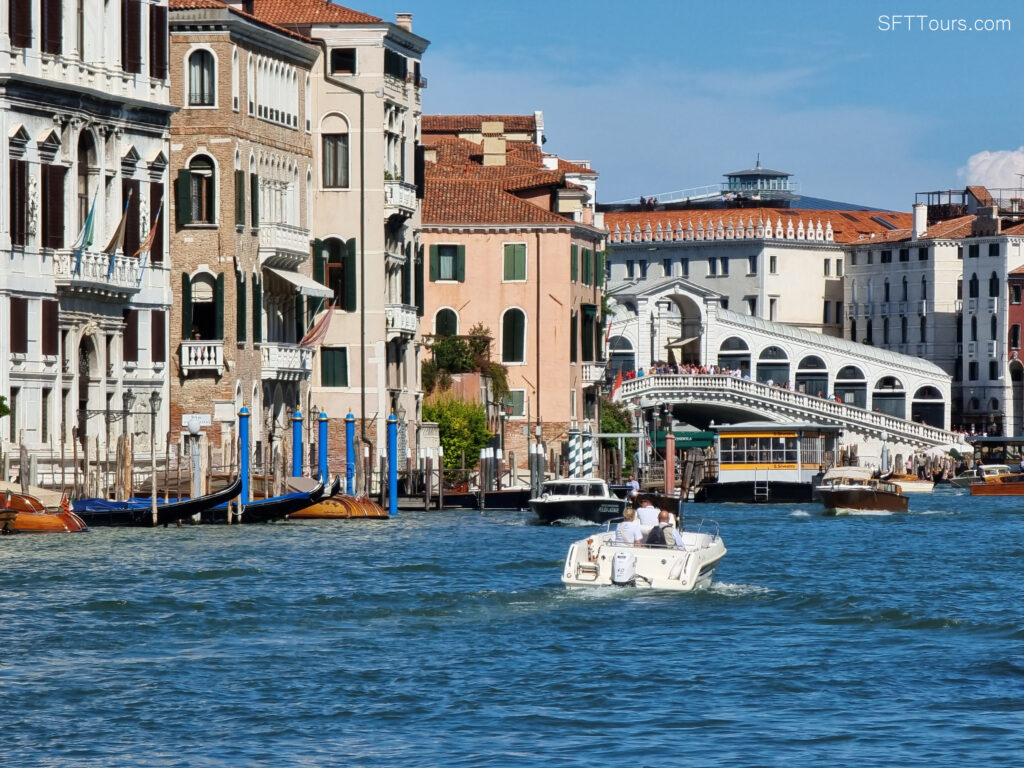
Italy’s universal healthcare system is great and most towns will have a local clinic for small emergencies while bigger hospitals are available in larger cities.
- Bring all the medication you’ll need. While during your trip to Italy you will never be too far from an urban center, a doctor, a hospital and a pharmacy, it is strongly recommended to bring any prescription medication you may need and enough of it to last you the entire trip.
Your specific medication may not exist in Italy, or it may require a prescription you need to see a doctor for, save time and hassle by bringing everything you may need with you. Review what you should bring in your first aid kit here.
IMPORTANT: Make sure any prescription medication comes in its original pharmacy packaging, and with the corresponding doctor note and prescription to avoid issues at the border. It is your responsibility to check that whatever medication you bring can indeed be taken into Italy. What may be legal in your country, or even sold over the counter, could be a controlled substance elsewhere. Check the legal requirements to bring controlled substances into Italy here and take note of the documentation needed.
- Get that coverage. We never leave the house without purchasing extensive medical and travel insurance coverage and this is why we make it mandatory to join our tours.
While in Italy you will be helped in case of a medical emergency whether you can afford it or not thanks to a universal healthcare system, you should make sure that you have adequate medical insurance to cover any unforeseen medical expenses.
Unexpected accidents do happen, and if you needed to be evacuated back home with an injury, the medical bill could bankrupt you. It is also unfair to expect Italians to pay for your medical treatment with their taxes.
The best travel insurance will differ for each traveler, depending on the nature, style, and length of your trip, so we recommend using an aggregator and comparison tool such as Travel Insurance Masters to find the right one for you depending on what coverage you want, age, location, trip, etc.
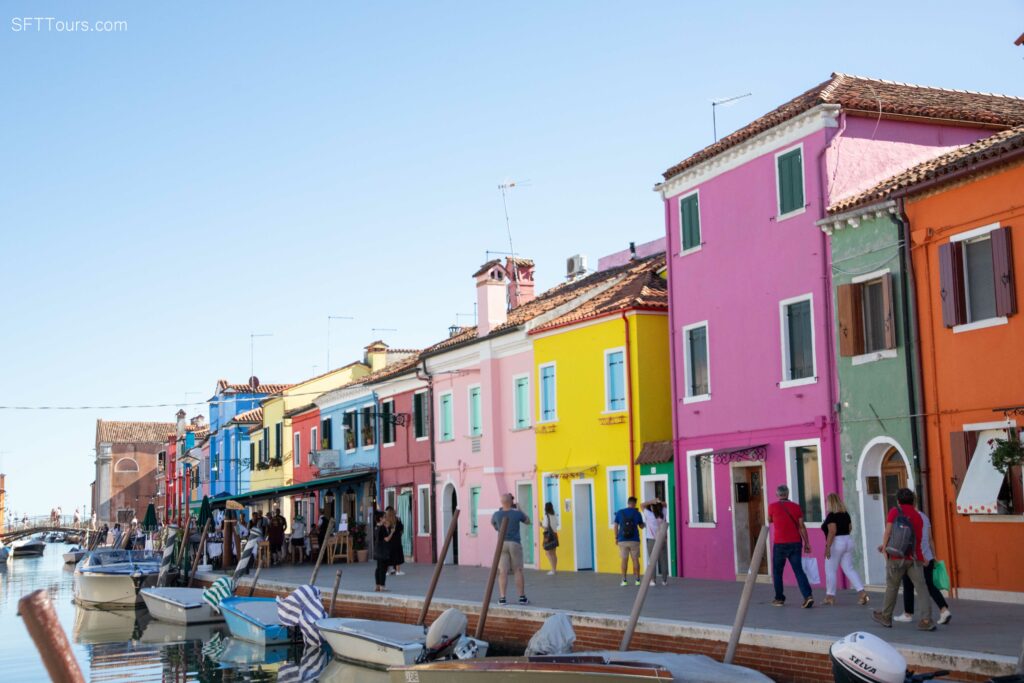
- Tap water. Generally, tap water should be safe for drinking but you should always double check, especially in farm houses. Bring a water bottle with you to top up at the public fountains. Some towns have sparkling water fountains for a nominal fee.
- Staying safe. Italy is a generally very safe country to travel to. However, in popular tourist areas or attractions, pickpockets operate and have become quite smart and elaborate in their scams and theft operations.
Always keep your valuables safe and your bag in the front and zipped. Slash and theft proof cross-body bags are a great idea, here are our recommended bags. In crowded areas, keep your arm on your bag’s zipper for extra protection.
If something is to happen to you, you will most likely not even notice, but look out for situations in which anyone is trying to distract you by trying to sell you something, talking to you or drawing your attention to anything while a partner steals your wallet or phone. And don’t fall for the photo ops with gladiators and other characters, unless you are fine with giving them a tip. Read our full article on safety tips here.
- Passport copies. All hotels are required by law to take a picture of your passport so don’t be alarmed if they do.
Basic Italian words
In tourist places in Italy, you will always find someone who can speak at least basic English, and menus in popular towns and cities will be available in English, though if a restaurant offers the menu outside and in English with pictures, you know who eats there.
The Italian language was formed in Tuscany in the Middle Ages thanks to the work of writers such as Dante Aligheri (from the Divine Comedy), and while Italy has lots of regional dialects, all Italians speak Italian.
Learn some local phrases with language apps, which will help you out and show locals you made an effort. Below are the most useful ones.
- “Ciao” is hello and goodbye but is rather informal. When you enter a shop, you could say ciao but it would be more polite to say “buon giorno” for good day or “buona sera” for good evening.
- “Arrivederci” is goodbye.
- “A presto” for see you soon.
- “Per favore” is please.
- “Grazie” is thank you.
- “Prego” is a useful word used to mean “you are welcome”, or as a response when someone says thank you.
- “Non capisco” means I don’t understand.
- “Scuzi” is sorry.
- “Quanto costa” to ask for the price of something.
- “Acqua liscia / gassata” for still or sparkling water.
- “Come stai?” is how are you.
- Italians say “Salute” when clicking glasses.
- “Il conto” when asking for the bill.
And remember, if you see Italians shouting it does not mean they are having an argument, they could well be having a passionate conversation or talking about football.
Travel essentials for Venice
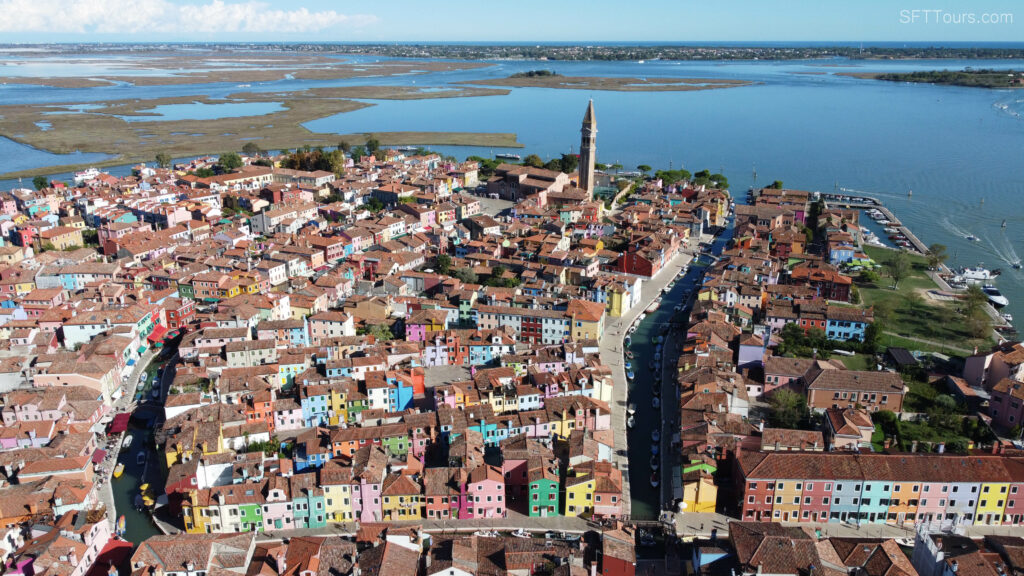
Italy is a very regional country with huge differences from province to province in terms of food, gastronomy and traditions.
- Getting to and around Italy. There are many major airports in Italy to land at (Rome, Milan, Naples and Florence for example) but a great way to travel across the country is by taking the high-speed trains which are clean, on time, affordable and offer free WiFi. We prefer to take them to go from our trip destinations, from Amalfi to Venice and Tuscany.
You can find the timetable and get tickets on TrenItalia in advance. Remember to always validate your ticket on the machines before boarding the train to avoid a fine. Having a ticket is not enough (unless they are purchased online and for a specific time in which case you don’t have to validate them).
Uber only exists in 8 major cities in Italy including Turin, Rome and Milan, through the Black car service since May 2022, until then, the app was banned. The closest to a local taxi hailing app is MyTaxi. Check out more useful travel apps to get around here.
- Public holidays. Italy has several public holidays and during these days, most businesses will be closed, this means attractions such as museums may not be open.
Plan around the most important ones such as Christmas Day (25th December), Boxing Day (26th December), New Year’s Day (1st January), Epiphany (6th January) and Easter Friday and Monday (changing every year), St. Mary (15th August) and All Saints Day (1st November).
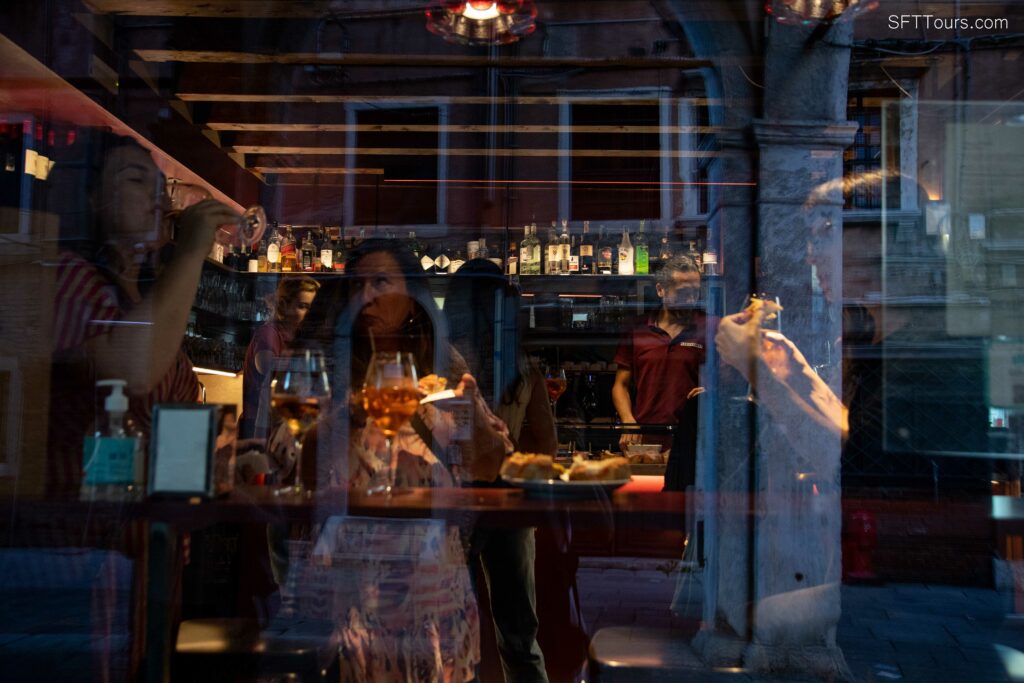
- Air conditioning. It can be really hot in the summer months in Italy yet many places don’t have AC. All the hotels and villas we stay at have air conditioning units but it is always worth checking in advance.
- Have an ID with you. It is a legal requirement in Italy to carry an ID with you at all times though we recommend leaving the passport at home while carrying a local ID or driving license with you instead.
- Staying connected. Public free WiFi hotspots are not really a thing so explore roaming options with your home mobile provider or get a local SIM card at the airport or in town at tabaccheria stores to stay connected, or an eSIM online like AloSIM or Airalo before your trip (you need internet to download the eSIM card).
Make sure your phone is unlocked so that a foreign SIM card will work, and get the store staff to help you set up the new SIM card before leaving the shop so they can help you with any settings that need changing.
- Public toilets. Many of the towns across Italy have public bathrooms that are clean and accessible. They usually cost 0.5 EUR which can only be paid in coins and are marked with signs. Some of the have change machines nearby where you can break down your EUR. Additionally, all bars and restaurants are required to let you use their facilities for free. We recommend a small purchase out of appreciation.
- Dual voltage. Many small and older appliances that you may use back home may not work in Italy (or other European countries). This is because the voltage is not the same. If you have an old appliance, consider leaving it home, most hotels have hair dryers. The photo ops in Venice are plenty, so plan to have a power bank with you if you need to charge electronics on the go.
Outlets are usually 2 prong and round (as is in all of Europe), so bring an adaptor if you need it.
Money and currency
In Italy, only Euros are accepted and no other currency. Bring both cash and cards because while cards are widely accepted, they may not be everywhere or for smaller purchases. Minimum amounts may be required to pay by card. If you try to pay for a gelato with a 50 Euro note, the staff will not be happy. Tips are almost always given in cash.
Tipping
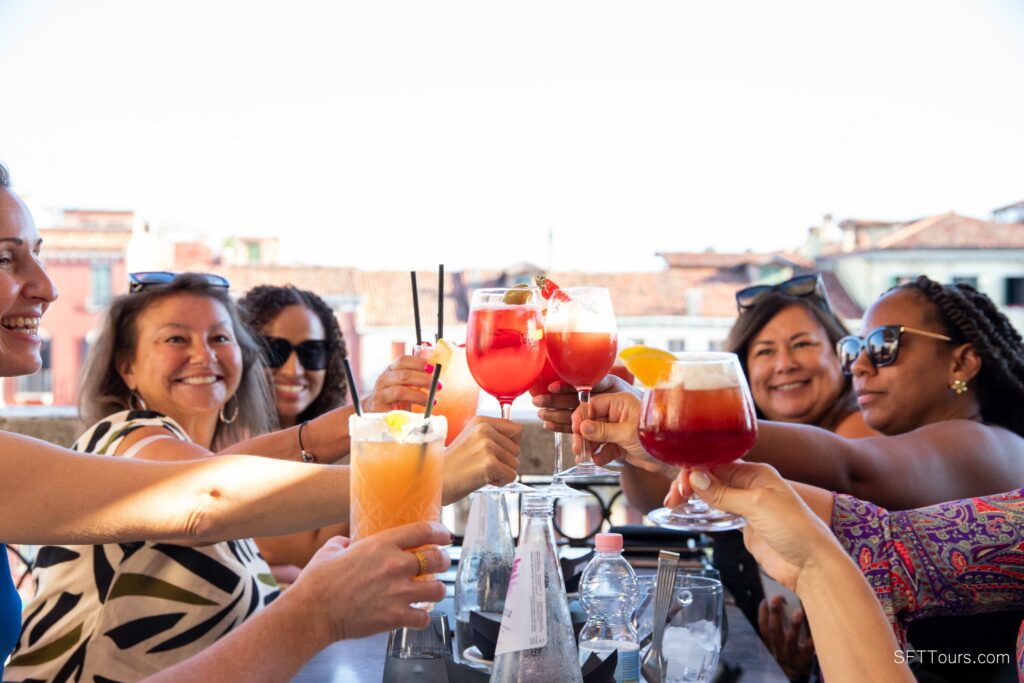
Tipping in Italy is more common than in Spain or Iceland but far less than in the US, and it should be a sign of appreciation for great service not a standard action.
You should generally tip at food establishments and not doing so would make the staff think they did a bad job. However, if the service was not good, you should not tip.
As tipping is generally done in cash, mostly in coins, it’s important to carry enough 50 cent, 1 and 2 EUR coins with you. You should leave the tip with the bill or tell the staff to keep the change (e.g. if you give a 50 EUR note for a 47 EUR bill). At a bar, you would leave it on the bar. Credit card machines don’t usually have a way to add a tip.
- At a restaurant: Round up to the nearest EUR (e.g. if the bill is 22 EUR give 25 EUR) or 10% at finer restaurants. You can tell the waiter to keep the change or leave the change on the table.
- At a bar: Leave a coin (e.g. if the bill is 1,5 EUR leave the smallest coin you got as change).
- Light meal / Aperitivo: 1-2 EUR per person.
- Guides: You may tip 5 EUR per person for a full day tour.
- Hotel staff who helped you with your luggage: 1 EUR per bag.
- Housekeeping: Not common.
- Free tours: Whatever you feel is fair for the tour. You can also see the price of regular tours for a benchmark.
You should not tip if the bill mentions “Servizio”, this means the tip has already been added. This rarely happens and you are only going to find it in high end restaurants.
If you’re still confused on how tipping works, there are travel apps like GlobeTips that can help you calculate how much you should tip in each destination.
Local culture and customs
Italians are affectionate, passionate and loud. These are not stereotypes but rather cultural traits that will help you understand culture better.
- Loud talk is not an argument. Two people yelling in the street at each other may not be having an argument but rather talking emphatically about their day.
- Dress appropriately. Even when the weather is hot, shoulders and knees should be covered inside churches and religious buildings so a shawl or scarf can come in handy. And remember that you will be walking on lots of cobblestone streets and that good walking shoes are a must. Really flat sandals with no support may become quite uncomfortable after a while, closed shoes that are non-slip are probably best. Click here to read our Amalfi packing list.
- Hand gestures. A bit like Spanish and some Latin American cultures, Italian culture uses face expressions and hand gestures to express an idea. When talking to an Italian don’t be surprised if they use their hands and gesture a lot.
Local cuisine
Food and gastronomy are essential to any trip to Italy, so let us tell you more about eating habits and customs, as well as the best dishes to try in Tuscany.
Eating in Italy – What to expect
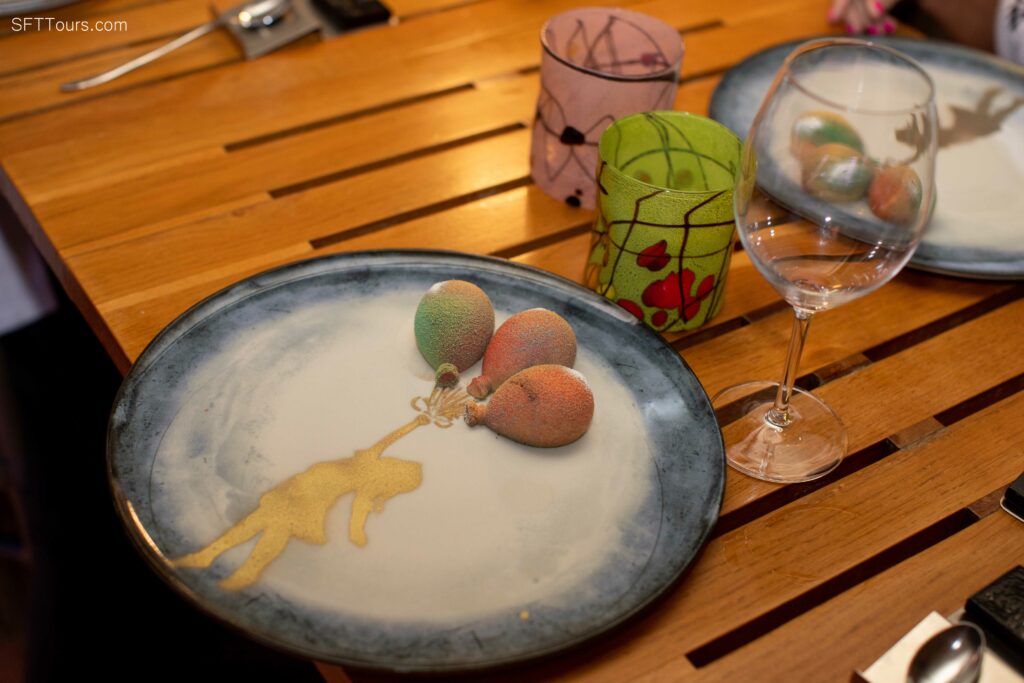
Italians eat later than other countries but not as late as Spaniards. Lunch is usually at 1pm and dinner from 7:30pm.
There is a huge coffee culture in Italy, but not in the way that for example Australians may interpret that.
Italians call a bar what you may think of as a cafe / cafeteria, a place that is open during the day and serves snacks, maybe even a light meal and drinks such as coffee, not a place with music, alcohol and party, though alcohol is served.
Worth noting that “bars” are places for a quick break, that is, you don’t go there to lounge and sit down but to enjoy a drink or quick snack often at the bar.
If you sit down to enjoy your time, especially if you choose a terrace or outdoor space, expect a table service charge to be added which can often be more than the price of an espresso.
Besides the table service charge, there is also a “coperto” or cover charge which is usually a fee for cutlery and bread charged per person.
This is a historical charge also often found in Spain, that is hard to understand today other than for the bread that you get. You can’t get away from paying it as it is a default charge, but it is usually mentioned on the menu.
In terms of picking where to eat in Venice, best to avoid places that look like they were designed for tourists (picture menus, English translations, waiters waving you in in your native language, etc.).
It is also highly recommended to avoid sitting at the main square if you are on a budget. Trattorias and osterias are good local options to enjoy an authentic meal by yourself.
We love to people watch and that is what makes Italian squares amazing, but you should expect the show to come at the price of a high coperto and table service charge plus most likely inflated prices. Be aware to avoid disappointment.
Best Venetian foods to try
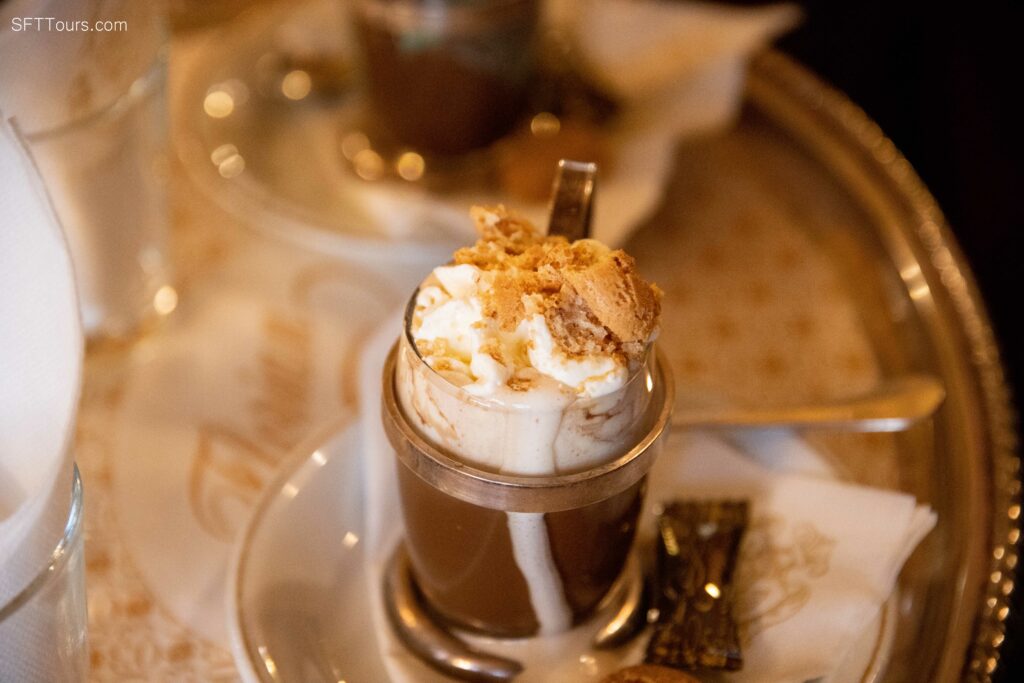
When talking about food in Italy, it is also worth remembering that a lot of the dishes you may be used to seeing in Italian menus abroad are not in fact Italian.
Dishes like pasta alfredo, spaghetti bolognese, pizza with pineapple or pizza pepperoni are an American invention and if it’s on a menu in Italy you know who the restaurant is for.
Oh, and “latte” is “milk”, so if you want a coffee with milk be sure to order a cappuccino or a latte macchiato; just latte will get you a glass of milk.
The vast regional wealth of Italian cuisine means that some dishes are only found in one place.
For example, pizza and pasta are everywhere but the toppings or sauce changes dramatically, and famous foods such as cannoli are from Sicily and not commonly found anywhere else.
Pro tip: Italians don’t eat pasta with a spoon, they simply twirl the spaghetti around the fork.
Venice is the origin of many of the most popular Italian staples in restaurants abroad. Items such as tiramisu, carpaccio or Prosecco come from this part of Italy. Here are some of the best dishes to try while in Venice.
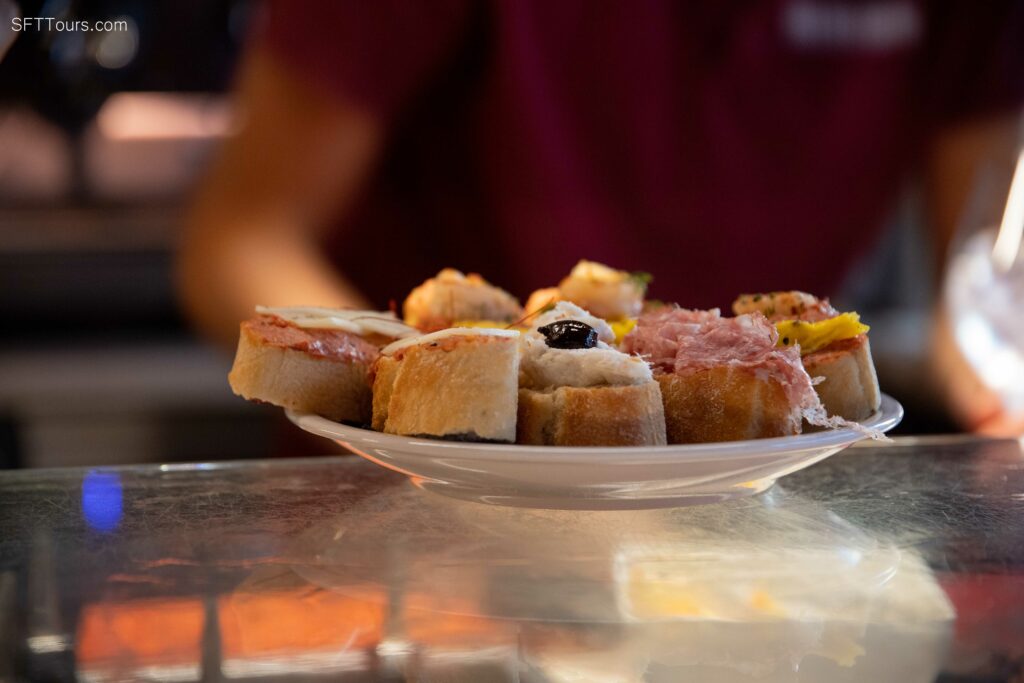
- Ciccheti: The Venetia version of tapas is a cheap and easy way to share a meal with friends and follows the exact same format as the pinxos in the Basque Country in the north of Spain. We will enjoy an evening of Cicchetti during our trip to Venice and will bar hop to sample various bite-sized portions of delicious food in the back alleys. Cicchetti usually include a variety of bread-based dishes that are small sandwiches (open face, in triangle shape, in panini format, etc.) as well as fried balls with different fillings.
- Sarde in saor: As would be expected from a seafaring and sea-facing empire, sardines preserved in vinegar were a staple of sailors and this healthy and fresh recipe has remained as a popular started. Today, sardines are no longer preserved but rather marinated with onions, raisins and pine nuts.
- Risi e bisi: A rice and green peas dish that is popular of the area and historically comes from an offering the peasants made to the Doce. Rice is almost as common as pasta in Venice because the region of Veneto is a major rice-growing region.
- Fritto misto: Basically means a fried mix and includes any kind of battered and deep fried seafood mix from the lagoon, omnipresent in Venetian menus.
- Risotto al nero di seppia: Black rice cooked with squid ink is a very unique dish of Venice that you must try at least once, just don’t do so while on a date, the squid ink taints everything (lips, mouth, tongue, teeth) black.
- Salumi: Like in Spain, Italians eat a lot of cured meats of all kinds and this is the name used to refer to all.
- Baccala mantecato: a creamy blend of cod fish that is usually served over crostini (toasted bread) or polenta as an appetiser and is typical from Venice.
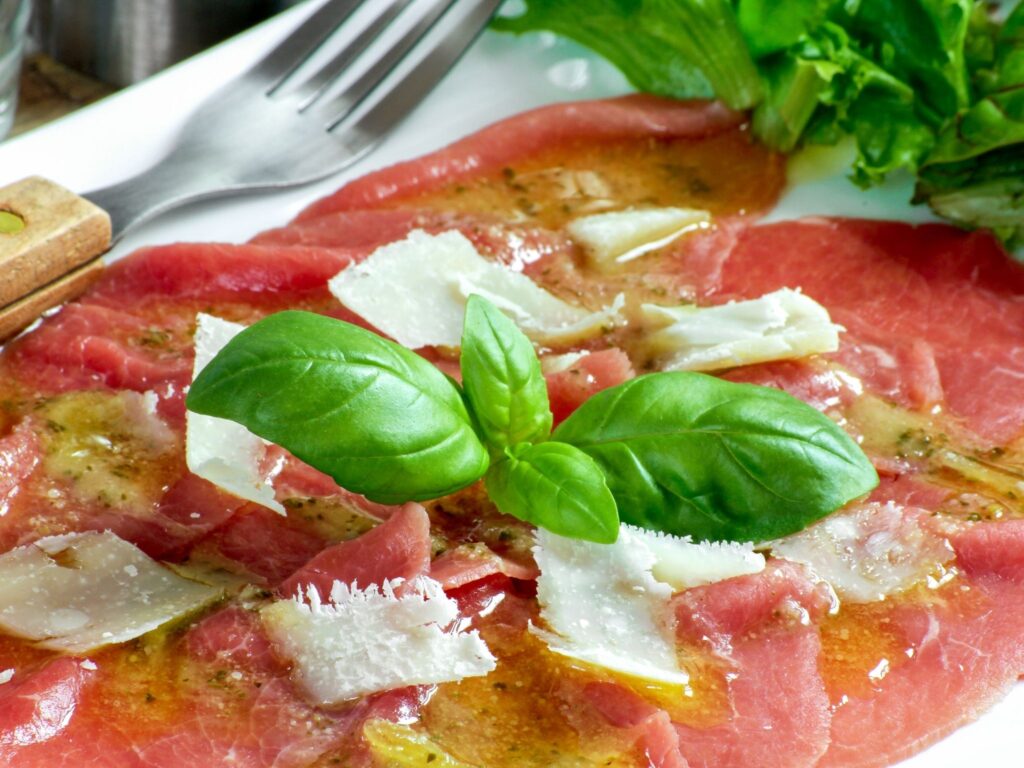
- Carpaccio: Did you know that the now famous Italian dish was invented by Cipriani (the inventor of the Bellini) in the 1950s for his friend Countess Amalia Nani Mocenigo who could not eat cooked meat? Now you know.
- Gelato: Ice cream in Italy is creamy and soft and served everywhere in the summer but not all gelato stores are the same, we can only recommend you try a few and learn the difference for yourself.
- Baicoli: These long-lasting biscuits were also the result of sailors needing food that would last long voyages. They are oval shaped and look quite simple but have to go through two rising processes to be so lasting. As you can imagine, they also make great souvenirs and pair well with sweet wines.
Best drinks from Venice
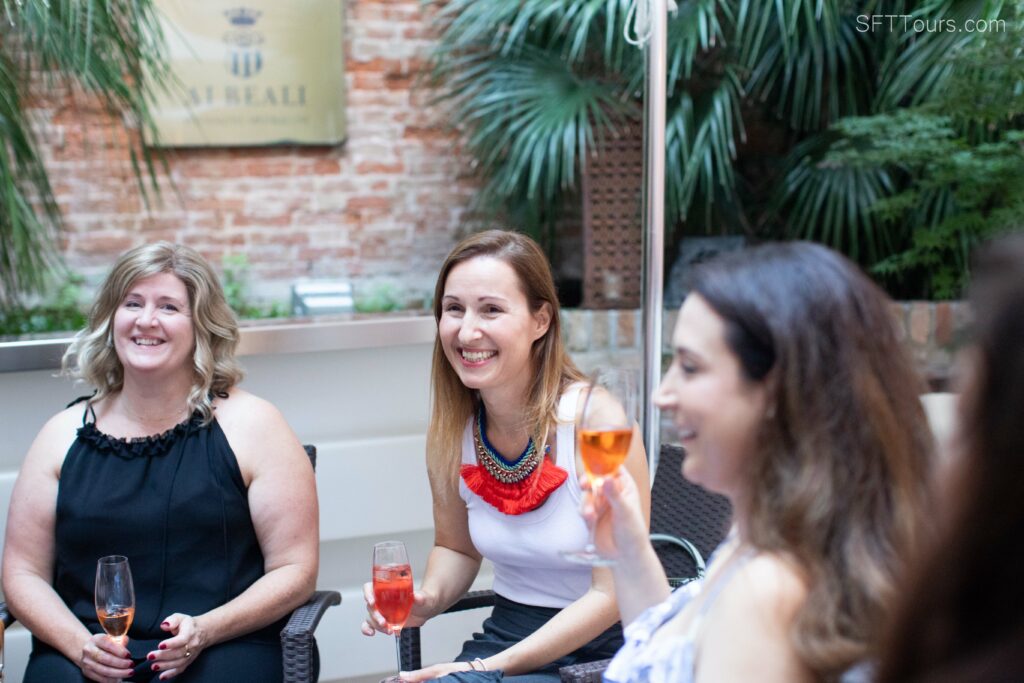
Across Italy, you will always find Vino della casa (house wine). Wine is pervasive and fantastic in Italy and in casual eateries, it is common to offer house wine with meals. This is bought wholesale and served in a jar (250ml, half a litre or a litre) for a very modest price. If it’s not on the menu, ask about it.
Aperitivo is enjoyed before dinner and consists of a drink (does not have to be alcoholic) and some snacks which could include bruschetta, cheese, cold cuts, olives, tomato, etc. along with great conversation.
In Venice, aperitivo must include Spritz or Bellini both of which are made with Prosecco which comes from this part of Italy
If you like coffee, you’re in for a treat in Italy. Just know that Italians drink espresso-based coffee, 14 million a year, and that the amount of coffee is small and intense.
Large cups of watery coffee are just not a thing in Italy. When you order a coffee, it will be an espresso by default, you don’t need to specify (un caffè -> an espresso).
Wines from Venice
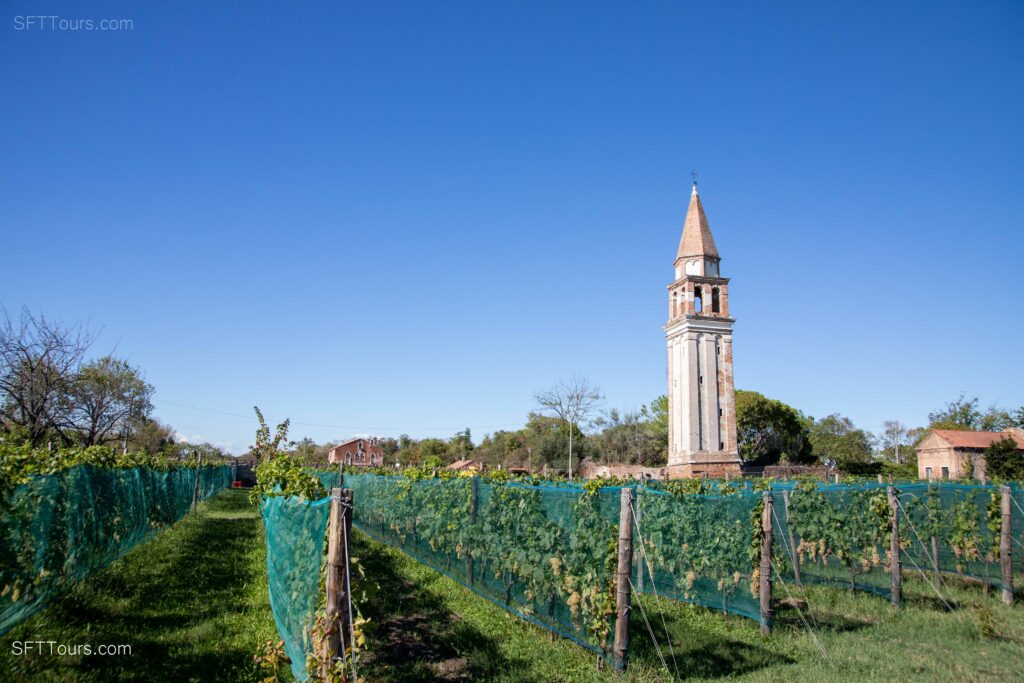
Who would have known that, in the small and very scarce land area of Venice, wines would be made?
During our trip, we will be visiting one such winery located on its own island on the lagoon and there are in fact two wine regions that are included within Venice, Orto di Venezia and Venissa. They produce very unique wines grown on a soil that is shallow and rich in salt, so they make for a pretty rare find.
Farther afield, within the Veneto region, you can find some of Italy’s most famous and beloved wines such as Prosecco, and the variant cocktails made with it such as a Bellini or an Aperol Spritz, and other wines from Valpolicella or Amarone Apellations of Origin.
Books about or set in Venice
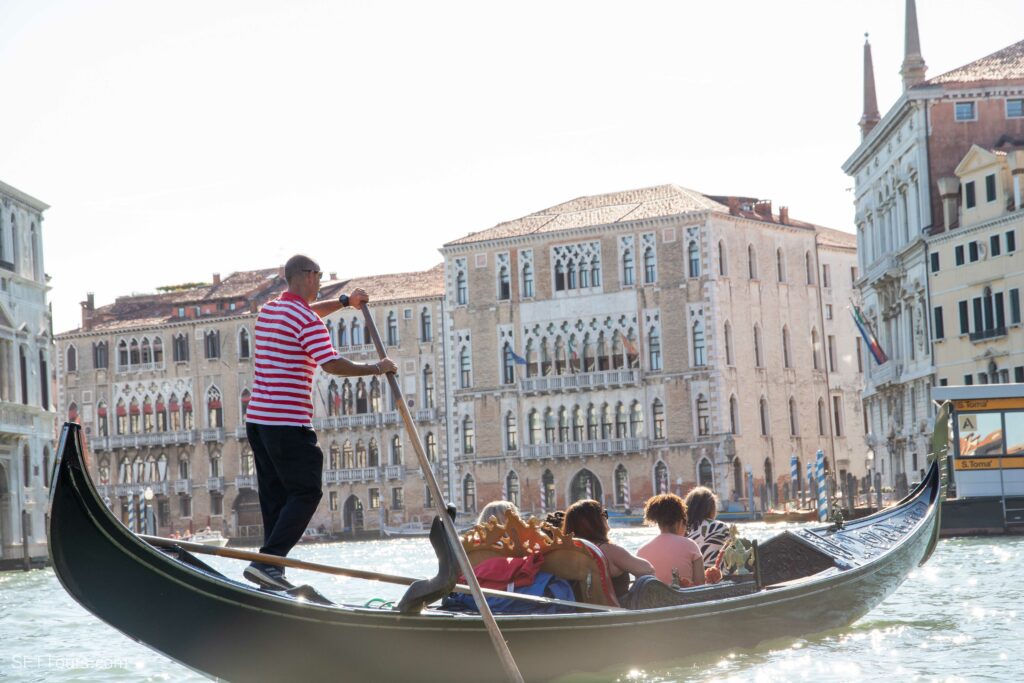
Venice has always inspired romance, mystery and writers, and one of the best ways to understand the intricacies of a floating city and the challenges of living in a place that is at the mercy of the high waters and the weather, is by reading stories, whether fictional or real, that take place there.
Here are a few books set in Venice to get you started:
- The Science of Saving Venice by Caroline Fletcher and Jane da Mosto: If you want to learn more about the delicate ecosystem in which Venice lies, this is the book for you.
- The Glassblower of Murano by Marina Fiorato: An insight into the life and traditions of this island and its glass blowing heritage that unveils its fight to preserve the secret formula for the beautiful glass.
- Venice The Tourist Maze by Robert C. Davis and Garry R. Marvin: Another non-fiction book that explains the city’s love and hate relationship with tourism and the many challenges it faces to preserve its soul without selling it to the Devil.
- Venice by Jan Morris: Probably the bet book to read to understand the transformation of Venice into today’s magical place.
- The Merchant of Venice by William Shakespeare: One of Shakespeare’s most famous writings and one of the few he set in Italy, even though it is unclear if he ever visited. You can also read Othello for another Shakespeare book set in Venice.
- Donna Leon’s Commissario Brunetti series: Any of the books in this series, all of which I have read more than once, are fabulous to better understand Venice and its challenges today.
This fiction series revolves around the police chief solving whatever mystery, usually a murder, that takes place in the city and it always unveils a side of Venice lesser known to tourists, like environmental crimes, pollution, over tourism, etc. through the eyes of an irreverent and stoically Venetian policeman.
- The city of falling angels, by John Berendt: A true crime story set in Venice that unveils the mystery behind the 1996 fire of the Fenice opera house in Venice.
- Death in Venice and Other Tales by Thomas Mann: A classic and perhaps the best known book about Venice, also turned into a movie.
- A thousand days in Venice by Marlena de Blasi: The author and main character of this book is an American chef that through fate, meets and marries an Italian local and moves to live in Venice. Fabulous for food lovers.
Movies and shows about or set in Venice
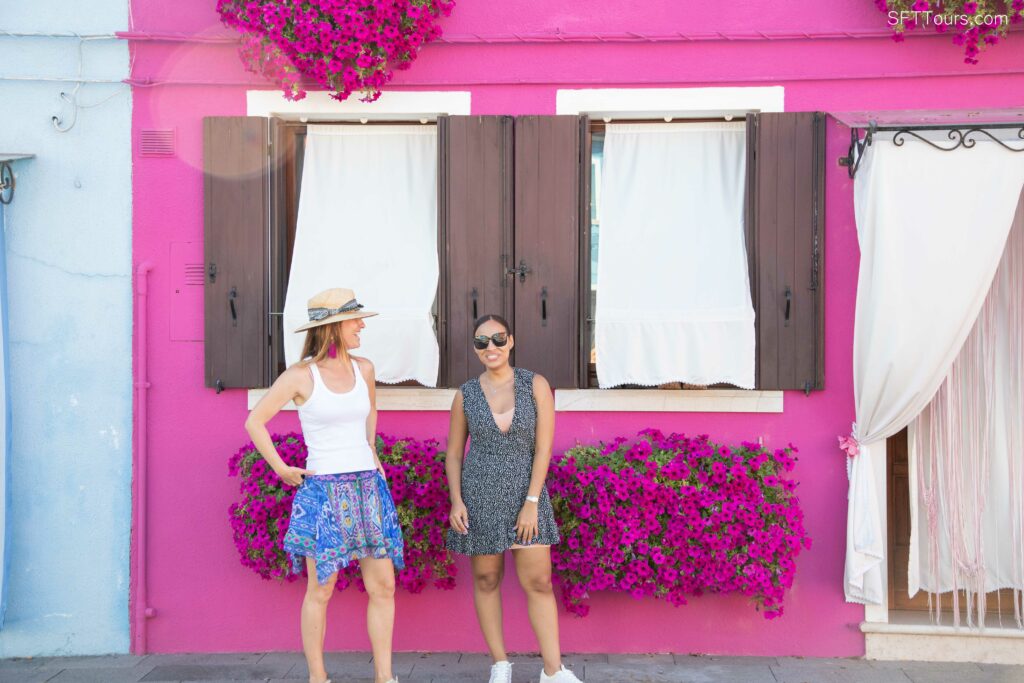
There are so many great movies set in Venice that it is hard to pick the best but here is a selection that will make you want to visit even more.
- Summertime, by David Lean: A typical story where a woman escapes life to Italy and falls in love with Katherine Hepburn.
- Death in Venice, by Luchino Visconti: Not quite the romance story of other movies set in Venice but, like the book, this is a classic for the city.
- The Italian job, by F. Gary Gray: The newer 2003 version was set in Venice and is a fast-paced action movie that actually managed to bring the city to a holt when it closed streets and canals.
- The comfort of strangers, by Paul Schrader: This thriller is set in Venice and will show you wonderful parts of the city as a couple on a romantic getaway find themselves in a complex situation through another couple they meet.
- Indiana Jones and the Last Crusade part 3, by Steven Spielberg: Set on location across many epic places including Venice, the third installment shows beautiful Venice as the backdrop of the crazy archeologist son of a Holy Grail scholar adventures to find his father who has been kidnapped by the Nazis.
- Casino Royal James Bond, by Martin Campbell: Another epic saga of movies featuring the world’s most famous spy includes various scenes set in Venice where romance and mystery prevail. It could be no other way in Venice.
- The tourist, by Florian Henckel von Donnersmarck: Featuring Angelina Jolie and Johnny Depp, this movie also includes beautiful scenes of Venice that cannot be missed. The story follows a teacher (male) and a Scotland Yard undercover agent (female) so it swaps the typical roles, and we love that.
- Only you, by Norman Jewison: This romantic movie entirely set in Venice follows Faith, who is about to get married, when a man named the same way a clairvoyant predicted would be her future husband, calls up. She follows him to Venice and the rest is a predictable love story with the most romantic backdrops.
- Casanova, by Lasse Hallström: The famous character that has evolved into a staple dictionary word was originally from Venice and captivated women from across the city. Womanizer and misogynistic, Casanova eventually had to get married to erase his crimes against morality. This version features Heath Ledger.
- The wings of the dove, by Iain Softley: A love story, like many movies in Venice are, but an interesting one, featuring Helena Bonham Carter as a smart young lady befriending an ailing wealthy woman with view to inherit her fortune and be able to marry the love of her life.
- Inferno, by Ron Howard: This thriller is based on Dan Brown’s novel with the same name. Professor Robert Langdon wakes up in an Italian hospital with amnesia. Then, Dr. Sienna Brooks joins him on a mission throughout Florence, Venice and Istanbul to prevent a deadly global threat.

